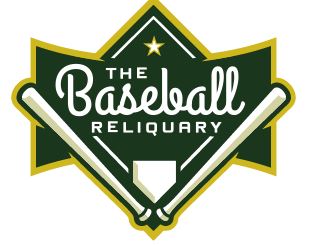Tuesday– May 7. 2013 – Toronto left hander J.A. Happ was knocked from the mound by a Desmond Jennings line drive. BBRT is glad to hear Happ is already out of the hospital, although he reportedly has a fracture behind his left ear that he indicated doctors say will heal on its own. BBRT wishes Happ, now on the disabled list, a speedy and full recovery.
 Desmond’s line drive came 56 years to the day that another left-handed hurler – Indians fastballer Herb Score – was dropped by a line drive of the bat of the Yankees Gil McDougald. The line drive was so vicious, the crack of the ball against Score’s face so loud (even in the stands, according to observers) that McDougald reportedly froze at the plate and had to be urged to run to first. The baseball struck Score flush in the face, the right eye to be more specific, knocking him to the ground – bleeding from the eye, nose and mouth. Score never lost consciousness, but had to be helped from the field, his head swathed in a bloody towel. He spent three weeks in the hospital, having suffered a broken nose, several other facial fractures, and severe hemorrhaging and a swollen retina in the right eye. After the game, McDougald said he would retire from baseball if Score lost sight in his eye.
Desmond’s line drive came 56 years to the day that another left-handed hurler – Indians fastballer Herb Score – was dropped by a line drive of the bat of the Yankees Gil McDougald. The line drive was so vicious, the crack of the ball against Score’s face so loud (even in the stands, according to observers) that McDougald reportedly froze at the plate and had to be urged to run to first. The baseball struck Score flush in the face, the right eye to be more specific, knocking him to the ground – bleeding from the eye, nose and mouth. Score never lost consciousness, but had to be helped from the field, his head swathed in a bloody towel. He spent three weeks in the hospital, having suffered a broken nose, several other facial fractures, and severe hemorrhaging and a swollen retina in the right eye. After the game, McDougald said he would retire from baseball if Score lost sight in his eye.
It was one of the most publicized, and talked about, baseball injuries ever. The fact is, Score had rocketed to the top of the national past time even faster than McDougald’s liner had found him on the mound. Among those of us who took the mound in Little League (I was a nine-year old third baseman/pitcher at the time), the youthful Score had become an instant hero (and the black and white photos of him lying on the mound in pain were downright scary). After the injury, I moved his baseball card to the place of honor – at the very top of my rubber-banded pack of person all-stars.
Score signed a contract with the Cleveland Indians on his 19th birthday – June 7, 1952. By 1954, as a member of Cleveland’s AAA farm club in Indianapolis, he was making his mark. That season at Triple A, he went 22-5, with a 2.62 ERA and league-record 330 strikeouts in just 251 innings. Score, who had already established a record as being nearly unhittable (but also lacking control) in his first two minor league seasons, gave up just 140 hits that season and seemed to gain some control (140 bases on balls). He earned the Sporting News recognition as Minor League Player of the Year – and was referred to often as “a left handed Bob Feller.”
Score was called up to the Indians in 1955 and continued to confound hitters. He went 16-10, with a 2.85 ERA and recorded a league-leading and rookie-record (broken 29 years later by Dwight Gooden) 245 strikeouts. He made the AL All Star team and was selected Rookie of the Year. His reputation continued to grow when he followed up his rookie season with a 1956 performance that included a 20-9 record, 2.53 ERA and a league-leading 263 strikeouts in 249 1/3 innings. Score also tossed 16 complete games and led the league with five shutouts. In 1957, up to the point of the McDougald line drive, Score was 2-1, 2.00, with 39 punch outs in 36 innings – and hitters like Ted Williams and Mickey Mantle were calling him the toughest left-handed pitcher they ever faced.
Score returned to the Indians in 1958 at went 2-3, 3.95 with 48 strike outs in 41 innings over 12 starts, before an elbow injury curtailed his season and – eventually – his career. While some speculated that Score’s elbow injury resulted from his changing his pitching motion so he could be better positioned to protect himself from balls hit back up the middle, Score himself rejected those comments. The hard throwing lefty indicated he changed his pitching motion after the 1958 elbow injury – which makes considerable sense. Score had such a violent delivery that he reported that he sometimes wore a basketball knee-pad on his right knee to absorb the shock of a follow through that often saw him bouncing his left elbow off his right knee. Regardless of the cause, the post 1957 Herb Score wasn’t the same. In 1955-57, Score went 38-20, with a 2.64 ERA in 73 games. In the remaining five years of his career, his record was 17-26, with a 4.42 ERA in 77 games. Herb Score was a true flame thrower, who – for fans, especially young fans – burned brightly, but too briefly.
Score, who passed away in 2008 , kept his passion for the game. His Cleveland Indians television and radio broadcasting career lasted 34 years, and earned him a spot in the Broadcasting Hall of Fame.





